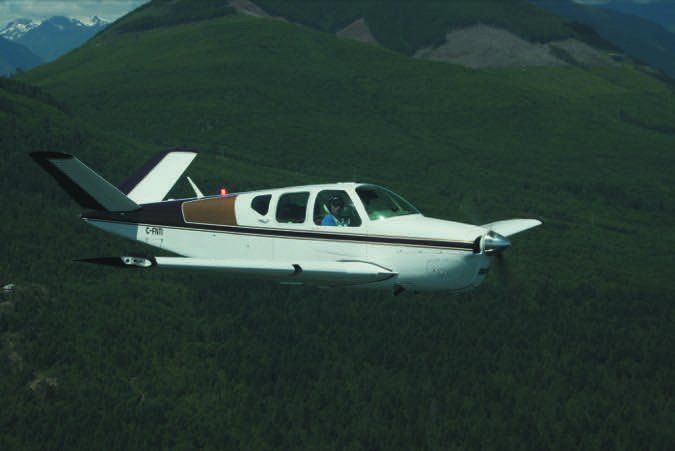If Beech Bonanza ownership seems out of the budget, the good news is that there are plenty of vintage V-tail models on the market at affordable prices. The bad news is that unless those 50- and 60-year-old airframes have been we’ll maintained, you could be buying a money pit. Plus, shops won’t feel sorry for you when you roll up in any Bonanza.
Not that an old V-tail restoration is bad thing. Many owners throw endless amounts of money at these airplanes making them far better than new. Pick your vintage. With antecedents dating to 1947, the venerable V-tail remained in continuous production until 1982, something no other model can claim.
Although not cheap to operate, they aren’t unreasonable, either. Parts and support remain easily available, although owners concede parts can be expensive because, well, it’s a Beechcraft.
Although the V-tails suffered a bad rep thanks to a series of breakups during the 1980s, there’s little concern today. These airplanes have been subjected to a Beech-developed tail beef-up kit that has all but eliminated the breakup issue, although we found some broken airframes in the NTSB reports that were clearly no fault of the airplane.
Model History
The first V-tail Bonanzas were so ingeniously conceived that it appears they sprang from the mind of designer Ralph Harmon and others full-blown in the dim past of 1945. At the outset, the airplane was like nothing else on the market: fast and slick and great looking. The basic format was retained for decades through fine-tuning, strengthening and bigger engine iterations, yielding a plethora of model designations and no shortage of mods. In keeping with Beechcraft’s reputation for excellence, the early Bo’s got the benefit of wind tunnel testing and study to find ways to boost speed and increase safety, something not commonly done in the 1940s. This shows in the details, such as fully retractable tricycle gear, with no projecting bumps or humps as on some other aircraft, and extensive use of flush-riveting. A unique fuselage design incorporates a sled-like keel arrangement and box structure to increase crashworthiness.
This structure extends into the engine compartment, with the motor mounted on keel extensions, making it easy to access for most maintenance operations. We’ve always liked that the huge side windows were hinged at the top with quick release openings at the bottom to allow easy escape in an emergency, a side benefit enjoyed by rear-seat passengers.
The Fast Straight 35
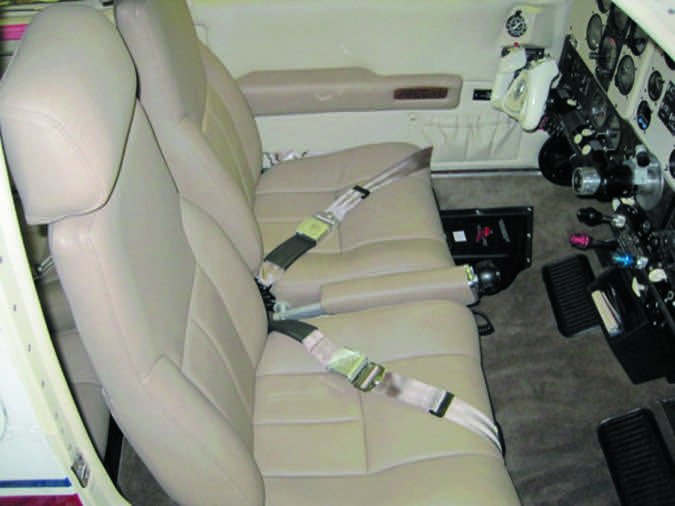
The first so-called “straight 35” model Bonanza had a 165-HP Continental engine that produced an amazing 175 MPH at cruise speed. These models are among the cheapest Bonanzas on the market these days, but we would counsel potential buyers to be cautious. Unlike later models, the straight 35 lacks a shear web in the main wing spar—a design strategy undertaken to save weight. And although Beech offered a 35 wing-strengthening conversion in 1951, there weren’t many takers for the expensive mod, priced at $6000.
Beech offered a number of wing mods and there was an aftermarket modification called the Jourdan-Flannagan mod. Some advise avoiding these, but if you’re considering one, the American Bonanza Society believes they can be operated safely if you do your homework. That means a careful prebuy inspection and a checkout that emphasizes operating limitations.
With the succeeding A35, Beech made important strengthening improvements, adding a new wing carry-through structure and thicker wing skins and fuselage stringers. They beefed up the fuselage bulkhead at the tail attachment. On the B35, a slight power boost during takeoff of 11 HP was engineered through slightly higher RPM. With the C35, major changes were made to the stabilizer. The chord was increased by 14.4 percent and the dihedral increased slightly in an attempt to reduce yawing. The chord increase was made by simply extending the leading edge, but leaving the front spar where it was.
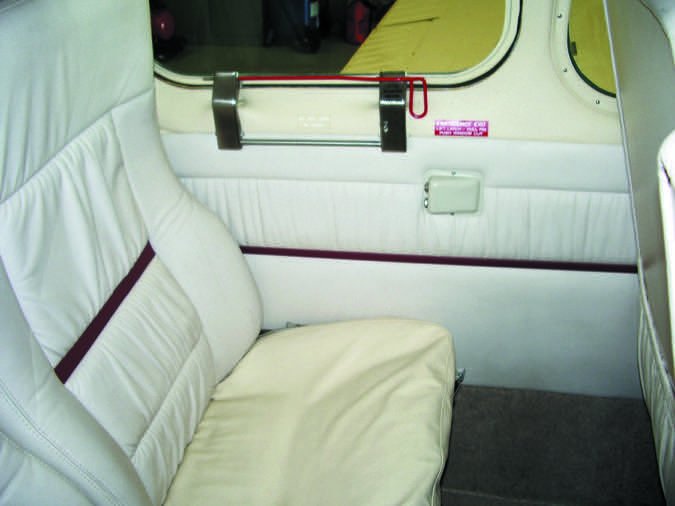
This created a greater overhang forward of the spar that would figure in tail-twisting during in-flight breakups and would later be secured by a bracket after a big FAA/Beech investigation into the breakup problem. With the E35, buyers had the option of a 225-HP Continental engine. Also, aileron trim was added for the first time and back-seat passengers got a couple inches more legroom.
The magnesium flaps were replaced with aluminum ones. In the G35, the wing was beefed up once again. And gear extension speed went up from 125 to 140 MPH, the first in a series of speed boosts that would make the landing gear an effective speedbrake.
Modern Bonanzas
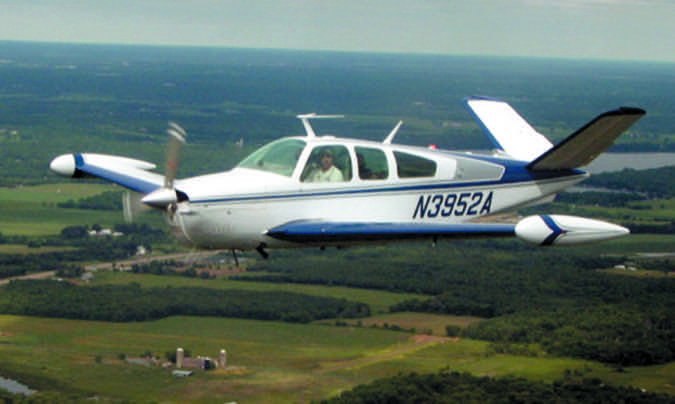
The H-model represents what Larry Ball in his book, “The Incomparable Bonanzas,” calls the beginning of a second generation of Bonanzas. The airplane got a bigger 240-HP powerplant which, for the first time in the line, offered identical takeoff and max continuous horsepower. This was the first wet sump design for the Bonanzas, allowing oil to be carried internally rather than in a separate oil tank, thus simplifying the plumbing somewhat. Additional strengthening was also added to the tail, fuselage and wings.
The major change on the J35 was a switch to a 250-HP fuel-injected engine. On the K35, the standard fuel capacity was boosted from 40 to 50 gallons, which with the 20-gallon aux tanks gave 70 gallons and moved the airplane up into the serious crosscountry machine it is today. Also, an optional fifth jump seat was offered, allowing more chances to load aft of the weight-and-balance envelope. Throw it away is our advice and many owners seem to agree.
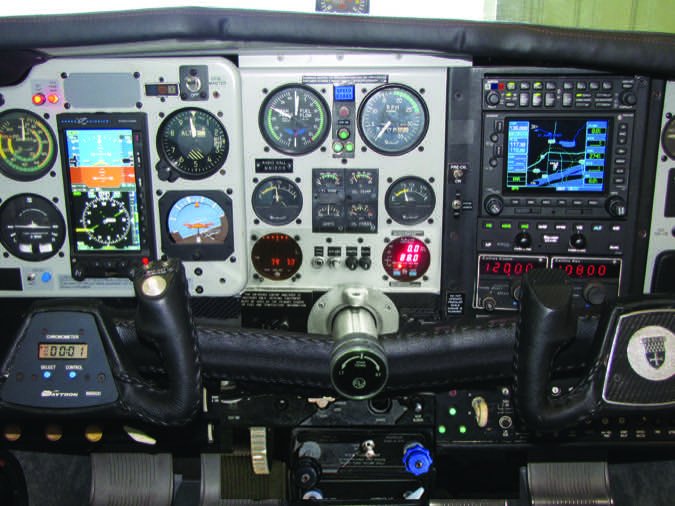
Elongated, curved rear side windows were added to the N35. Horsepower went up to 260 and fuel capacity rose to 80 gallons, while the number of fuel tanks was reduced to two. This was done by offering optional 40-gallon tanks in place of the standard 25-gallon tanks. Along with”full-time” fuel quantity gauges provided to both tanks, fuel management was simplified, a good safety feature.
The addition of new, long leading edge fuel tanks displaced wing landing lights, which in turn were moved to the nose and nosegear strut, where they remain in modern designs. Landing light bulb replacement is thus among the easiest of all GA models. And yes, LED lamps are the proverbial fish out of water on a vintage V-tail.
Pilots concerned with tracking troublesome magnesium components might also note the ailerons were converted to aluminum, thus easing repairs and repainting somewhat.
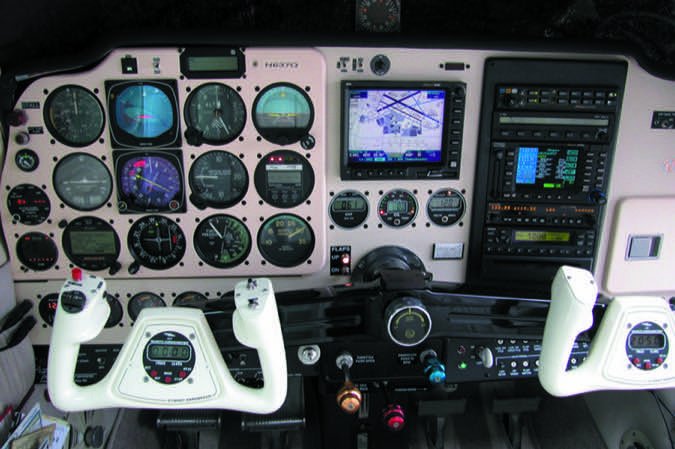
On the used market, the P35 is one of the best values, perhaps because it got a completely redesigned instrument panel, with the famous “piano keyboard” switch arrangement of the early models abandoned in favor of conventional switches, albeit not always located in the best places along the lower panel eyebrow.
The P-model saw a higher landing gear extension speed, up from 140 to 165 MPH. Although the P-model was a large step forward, Beech had even bigger ideas.
The S35 Bonanza got a 285-HP powerplant and a longer cabin with a new aft window shape like that found on Barons. The aft bulkhead was moved back 19 inches and although this made for a comfy cabin, it planted the seed of what has become a chronic complaint among Bonanza owners: aft CG. To address that in the S-model, Beech added a 25-pound lead weight to the nose for balance.
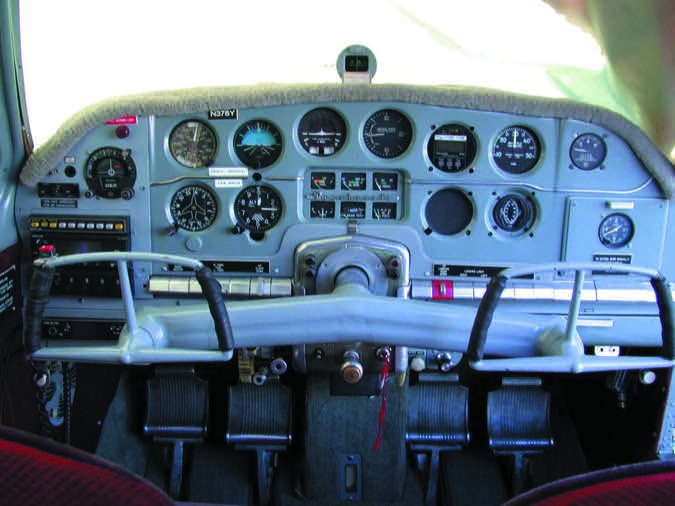
Theoretically, the S-model was a six seater. But not really. It’s just not practical to stuff passengers back there, unless they’re lightweight kids. The larger baggage compartment door is a nice plus, however. Visibility out front improved with the V35 model as a one-piece windshield was made standard. And on the V35A that followed, a bigger, swept windshield was added that allowed more space behind the instrument panel for maintenance.
A V35TC turbocharged model was added to the line for the first time, also. Normal gear-down speed went from 165 to 175 MPH. The big safety improvement on the V35Bs was the addition of anti-slosh fuel cells to prevent inadvertent unporting during slips, skids and turning takeoffs, a shortcoming that had caused mishaps.
Some models carry placards advising of minimum takeoff fuel, but many have anti-slosh baffles to address this.
Performance
Bonanzas are famous for their speed and justifiably so. With the largish engines and relatively low drag, owners report cruise in the 150- to 175-knot range, depending on engine power. The real eye opener with regard to raw speed is the conversion to a Continental IO-550 engine.
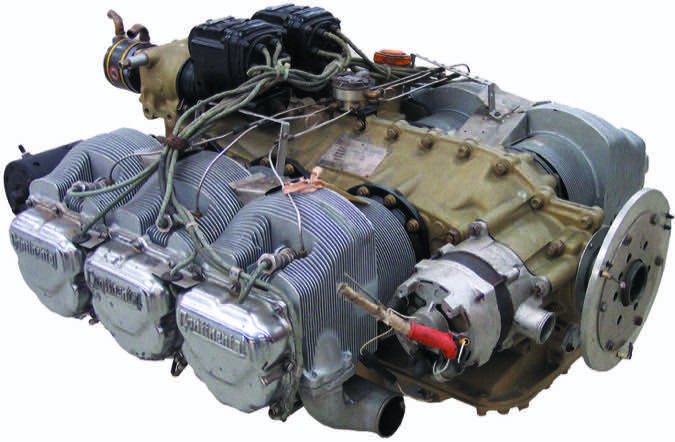
That speed comes at a price, however. Like Mooneys and other high-performance airplanes, the Bonanza is slick and will build speed quickly in a dive or an upset; thus it requires attention from the pilot in instrument conditions or potentially moderate turbulence. Bo pilots are wisely taught the desperation tactic of lowering the gear to arrest an out-of-control dive or unusual attitude.
Anyone who has stepped into a Bonanza from another model is immediately impressed with how we’ll the V-tail (and straight tails) handle. The controls are silky smooth and light with nearly perfect harmony between aileron and pitch pressure.
However, the stick-forces-per-G are also light, which means that the ham-fisted pilot has less margin in turbulent air. Even with the tail mods, the airframe can still be bent.
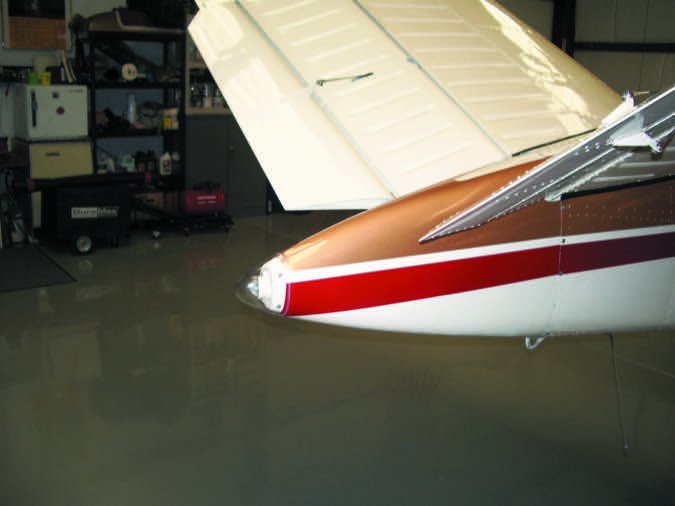
As with any high-performance airplanes, landings require good speed control. Although they can be done power off, most pilots seem to fly the approach with just a bit of throttle to improve ruddervator response and avoid sink fests. Consistent, smooth touchdowns are achievable but, more to the point, screwing up a landing in a Bonanza is hard to do. It doesn’t have the Mooney’s vicious porpoise or the Saratoga’s tendency to plop.
What it does have is the famous Bonanza tail waggle in turbulence, which is bound to make backseaters with tender stomachs somewhat queasy. Oddly, many believe the tail waggle is unique to the V-tail, but the straight-tail 33s have it too. Some owners ignore it; some say a yaw damper is required equipment, and many airframes have them installed.
Loading
Apart from the tail waggle, passengers give Bonanzas high marks. For one thing, there’s plenty of shoulder
and head room; the interior feels more like a 1950s Chevy than the cramped interior of the typical high-performance single. The front seats are relatively upright and comfortable, but lack much forward and rearward adjustment.
Legroom is adequate in both front and rear seats. By GA standards, the giant windows give unmatched airiness and visibility, especially out the rear side windows and forward through the windshield.
When carrying passengers, Bonanza pilots learn to brief them carefully on closing the cabin door. Most pilots do it themselves, for if not properly secured, the door is almost certain to pop open on rotation. It’s not an aerodynamic hazard to further flight, but can be dangerously distracting. It’s happened to us several times.
0)]
The aircraft’s loading Achilles’ heel is its relatively narrow weight and balance envelope, a peccadillo owners gripe about. Even without big-butted passengers, it’s easy to load aft of the rear CG, a potentially nasty situation in any airplane, but doubly so in one with controls as light as those on the Bonanza.
And on later models, as fuel burns out of the leading edge wing tanks, the center of gravity shifts farther to the rear, aggravating the situation. V-tail Bonanzas have generally stricter rear CG limits than the straight-tail models, which means that the same load will put you a lot closer to the aft limit in a V-tail.
Wrenching It
Buyers should be alert to three main problem areas: damaged control cables, rods and fittings; malfunctioning, out-of-order landing gear components; and corrosion. The landing gear and corrosion problems can be especially expensive to repair.
There’s also the tail inspection that’s required by Beech Aircraft Corp. as part of the tail-brace installation. Obviously, the tail fix will have been completed more than 20 years ago, but that doesn’t mean corrosion will stop.
1)]
The airplane should be inspected carefully. Proper ruddervator balance has always been a critical matter on the V-tail Bonanzas to prevent flutter or vibration, which can contribute to severe structural damage and even inflight breakups.
We found more than one of these incidents in our recent scan of accidents. The balance margin is so narrow that unbalancing could result from repainting the ruddervators without rebalancing afterward. Most shops know all about this, but some still make the error anyway.
Corrosion is often encountered with magnesium components like the ruddervators and on some Bonanzas, the flaps and ailerons. But check other components as well, as the Bonanza fleet ages. Some corrosion may have been we’ll hidden. The 35 series is not exactly slammed with ADs, but a prospective buyer should check the list carefully, especially the tail fix AD.
Mods, Owner Group
A lot of mods are available for Bonanzas, from STOL kits (Innova Aerospace, www.sijet.com) to engine swaps (D’Shannon Aviation’s IO-550, www.d-shannon-aviation.com), to speedbrakes (Precise Flight, www.preciseflight.com) to TKS anti-ice systems from CAV Aerospace at www.caviceprotection.com. D’Shannon also offers vortex generators, which are a worthwhile investment. Speaking of things worthy, the American Bonanza Society provides a good-looking four-color magazine, plus lots of technical advice. It sponsors pilot training and maintenance clinics around the country through its Bonanza Pilot Proficiency Program.
We would consider membership in this group a must for Bonanza owners, but especially any owner new to the airplane. Paul Damiano, the organization’s current president, is a longtime owner of one of the best-kept N35 models we’ve seen and he’s our go-to for anything related to these airplanes. Contact the ABS at 316-945-1700 or www.bonanza.org.
V35 Bonanza Crashes: Engines
Our review of the 100 most recent crashes of Model 35 Bonanzas revealed good news—there were remarkably few runway loss of control (RLOC) events—and not-so-good news—there were quite a few catastrophic engine failures and a surprisingly high number of fuel-related engine stoppages.
Only eight RLOC accidents is strong evidence of good ground-handling characteristics of any airplane—for nosewheel airplanes the average is closer to 20. There were also very few overshot landing accidents. We expect to see about five; there was only one. Three pilots aborted takeoffs—the cabin door popped open on all three—and couldn’t get stopped.
2)]
Twenty-two engine stoppages is about what we expect to see; however, what we didn’t expect to see was that over half were catastrophic events resulting from improperly conducted maintenance or overhauls. One of the lack of maintenance accidents involved an engine that seized due to lack of oil—the top of the engine oil filler neck had corroded so badly that it broke off, leading to the oil loss.
Amazingly, two of the pilots who experienced engine failures while talking with ATC did not tell the controller that they had an emergency nor the nature of their problem. As a result, they did not get vectors to the nearest airport by the most direct route, resulting in-off airport landings.
There were 19 fuel-related accidents—an unusually high number. Not only did a few pilots run their airplanes out of fuel completely, several ran a tank dry and didn’t change tanks before completing the resulting glide to the ground. At least three pilots pointed the fuel selector to a spot between the right and left tank positions. As a result of these accidents, we think pilots should pay special attention to the fuel selector and assure themselves that they know exactly how to position it to draw from each tank. It is apparently not intuitive as the rate of fuel-related accidents is we’ll above what we expect to see on other airplanes with multiple fuel tanks.
We also note that some Bonanzas can have as many as six fuel tanks and may have an indicating system that points to only one tank at a time—not necessarily the one from which fuel is being drawn. One accident was the result of a pilot new to an airplane set up in that fashion. He ran one of the tanks dry but had fuel in some of the others.
There were three inflight breakups. Two were due to loss of control; the third was because the pilot was descending at near redline speed in turbulence. Two airplanes experienced structural failure but remained whole long enough for safe landings. One pilot was head down “cross checking and calibrating” the multiple GPS units he had installed. When he looked up the airplane was in a 75-degree bank and 20 degrees nose down. He rolled and pulled—and bent the fuselage. The other hit severe turbulence and deformed the airframe.
We applaud the judgment of the FAA inspector who, when faced with a pilot summoned for a recheck of his ability to fly, elected to watch from the ground. The pilot hit so hard on landing that he blew a main gear tire, damaged the gear and lost control of the airplane, running off of the runway.
Owner Feedback
3)]
I have owned N637Q, a 1959 K35 Bonanza, for 40 years. I love flying this nimble, reliable and well-designed aircraft and would recommend it as an upgrade to anyone who has attained solid flying skills in a less complex machine. Most Bonanza owners take pride in maintaining and upgrading their aircraft and with many owners now senior, expect to see fine examples in the used market.
The K35 is powered by an IO-470-C with 250 HP and is one of the most trouble-free of the big Continentals. I flight plan for an overall fuel burn of 14 GPH running 75 degrees rich of peak EGT and plan on 160 knots TAS.
Basic annual inspections run between $2000 and $3000 depending on how we’ll you take care of things in between each event. Insurance cost varies greatly and depends mostly on pilot experience and the coverage you select. A yearly premium might be between $1500 and $3500. A hangar is highly recommended to keep the airplane out of the weather.
There are many excellent STC’d mods available for the V-tails, which I would recommend a potential buyer look for when searching for an airplane. Some popular mods include a speed-sloped windshield and thicker side windows with opening vents, extended-range fuel wingtip tanks, GAMIjectors, an air/oil separator, dual control yokes, Cleveland wheels and brakes, a spin-on oil filter adapter, a firewall-mounted battery box and shoulder harnesses. Parts are generally available from a variety of sources, although some are quite pricey.
A must is a prebuy evaluation by a Bonanza-savvy A&P or IA mechanic. Buying blindly could easily generate a $10,000 annual inspection invoice. If an inspection at an ABS Service Clinic can be coordinated before purchase, it might be the best money you could spend. There is tremendous organizational support for all Bonanza and Baron models through membership in the American Bonanza Society—another must, in my view. The monthly magazines are a tremendous source of Bonanza information.
Al Boyce
Coronado, California
I’ve owned C-FNTI, a 1960 model M35, since 1988 and it presently has approximately 3600 hours total time. The only real problems that I’ve had with this airplane have been engine related, otherwise I’ve found it to be relatively trouble-free but that’s probably due to the fact that I don’t let small problems become big, expensive ones.
It was painted in 1993 and has always been hangared so the paint is still good. For upgrades, I’ve done most of the popular ones such as the BDS speed-slope windshield, thicker side glass, S-TEC autopilot and GAMIjectors, plus my mechanic did a partial panel modification that gave me a modern layout with the radio stack on the right, but it also retained the original “piano key” switches. I installed an Aspen Evolution PFD and the radios are the familiar Garmin GNS430 and BendixKing KX-155. I use a Garmin 496 portable GPS for XM weather and entertainment.
When the engine was overhauled roughly 14 years ago, it was rebuilt as a 260-HP IO-470-N. This allowed me to keep the Beech prop; the original prop was on the airplane until four years ago when I was able to replace it with another Beech 278 prop. Barring exceptional years (like 2017) when engine work is required, I seem to average between $16,000 and $20,000 per year for routine costs. This includes insurance ($1350 for $90,000 full coverage), fuel, routine maintenance, hangar costs, charts and electronic nav data.
This year will be more because I had to top all six cylinders due to worn guides and burnt valves. I pay particular attention to the landing gear to make certain that it’s properly set up. I make a point to go at least once a year to a specialty Bonanza shop, including Avstar Aircraft at KPLU airport. Also, anyone who buys a Bonanza or is even thinking of one must join the ABS in order to be informed about the airplane’s nuances.
For performance, I generally see 165 knots true on 11 to 11.5 GPH fuel burn. It’s a great four-person airplane with no baggage, or two people with bags. It has two 25-gallon main tanks and two 10-gallon auxiliary tanks for a total of 63 gallons of useable fuel. This is enough for more than 4.5 hours, which is about right for me.
It’s said that the V-tails have a very limited CG envelope and although that’s true, because the 1960 and earlier airplanes have relatively small luggage compartments, the ability to load items a long way aft is restricted. Consequently, I haven’t encountered CG constraints. My wife and I can load our folding Dahon bikes by putting one in the luggage compartment and one on the rear floor.
In short, it’s reasonably fast, it’s comfortable, the fuel consumption is reasonable, it carries all that I need. Plus, since there aren’t many Bonanzas in Canada, my airplane is slightly unique.
Rick Johnson
via email
I jointly added a 1955 F35 Bonanza to my plane collection about 18 months ago with a partner who is new to flying. I currently own an Aerostar so my eyes were wide open when we pulled the Bonanza purchase switch. Our plane, N435WM, was a largely unmodified airplane all the way to the piano keys and the non-standard six pack panel. The airframe itself was in excellent condition that belied its 62-year-old age. The plane was last painted in 1994 and by anyone’s account it still looks new. The inside of the tail looks like a fresh beer can and all of the original production stencils were still present on inside of the aluminum skin. This plane had the potential to be a museum piece.
The prior owner was budget conscious to a fault and the hose connecting the accessory case oil drain to the intake looked like a soft sponge. The plane had been maintained by an A&P in a small fly-in community who clearly was not up to my level as there were a lot of “we are monitoring that” answers. Believe it or not, when we purchased the airplane the engine and cylinders (an E225-8) had made it from 1965 to 2016 without as much as a cylinder being replaced. Despite being approximately 200 hours past TBO the old E-series engine purred and the compressions were excellent. We bought this very nice airplane for $30,000 and flew her off the field a few days later. It was my partner’s first aircraft purchase and he could see no fault with this shiny new airplane.
Unfortunately that is where the good news ended as what seemed like a minor oil leak in a plane that had only flown 13 hours in the last year metastasized in just a few hours from a nuisance to unsafe. Within six months of the purchase, and another 25 hours, we were losing or burning a quart of oil every 90 minutes and the belly of the plane had enough oil on it after each flight that I was no longer comfortable in it. It was clear that this plane, in my opinion, was no longer airworthy and needed a complete firewall-forward engine. My partner, who still did not even have his private pilot’s license, was still so green that he thought this would be done in about six weeks and that a new motor was available just for the asking.
Never shying from a good project, we removed the engine and the electric prop. Having now done this I think I can remove the engine in four hours—especially if you have a good automotive engine hoist and some wooden A-frame. The engine was rebuilt by Poplar Grove Airmotive, who was one of the few companies in the country with credible expertise in these antique motors. We crated the electric prop and sent it off to Stockton Propeller to have it rebuilt and restored to a like-new appearance. There was no shortage of the “while we are in there” issues so we had Bogert Aviation build a new harness, another vendor rebuilt the gear motor, we replaced all of the electric solenoids and polished out the engine compartment. At the end of the day we ended up with the closest thing to a new 1955 Bonanza that I could imagine.
The project is not one for the faint of heart or the thin pocketbook. The rebuild of the engine and prop together with all rebuilt accessories cost we’ll in excess of $50,000 and that was before any money was spent in labor. By my estimation the restoration took about 300 hours and realistically took from Thanksgiving 2016 until May 2017 before the plane was flying again. I can say that we could have done it faster but this was a project that I was tackling in my own spare time.
Some additional credit is owed to the Beechtalk community as there are a number of good sources of armchair advice available. With that said, you have to be careful who you listen to as I also found that some of the posters fill the forum with completely false information.
We flew the plane about 15 hours before I would release my partner to begin his training in it. In the 15 hours we experienced the typical problems you find with any firewall-forward rebuild. One of the Garlock seals on our fresh engine was damaged when Poplar Grove assembled the engine and oil was leaking out of the fuel pump accessory drive adapter.
Our prop apparently came back from Stockton missing a washer around one of the counterweight bolts, so the prop worked great for about 10 minutes until the weight rotated and the vibration started. We returned to the field and found the obvious problem. The folks at Stockton appropriately apologized and overnighted the missing washer and the problem was immediately solved. Both Stockton and Poplar Grove clearly stood behind their work—albeit on my labor.
I originally told my new partner to be a renter, but he needed to own an airplane. From a financial perspective this was a huge mistake and the numbers will never make sense, but we do have the joy of knowing that N435WM has to be one of the best unmodified F35 Bonanzas out there.
Once you fly one of these old V-tails you will appreciate the genius of the design and the quality of the construction. In addition, you can park it next to a new Cirrus and most people will walk right past the composite airplane to revel in the coolness of the Bonanza and inevitably ask how that V-tail works.
Eric Lipper
Houston, Texas

